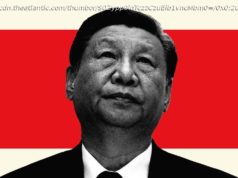Should anyone be surprised the two countries were ready to blow off the Chinese at the insistence of the Americans?
The China card was something Mexico and Canada were ready to play against the Americans when Donald Trump first came to power under a unilateralist banner of “America First”.
Who knew how far this volatile and inconsistent leader in Washington was willing to go after he denounced the North American Free Trade Agreement (Nafta) – which formed the basis of trade between the three countries for 24 years – as the worst trade deal in the history of his country?
But when the three sides have finally agreed on a replacement trade pact – the so-called United States-Mexico-Canada Agreement (USMCA) – should anyone be surprised that the latter two countries were ready to blow off the Chinese at the insistence of the US?
Article 32.10 in the preliminary agreement – which still has to be ratified by all three governments and so is by no means a done deal – gives Washington virtual veto power over any bilateral deal Canada or Mexico may wish to reach with “a non-market country”, for which read China. Any such deal could mean the end of the USMCA for that country.
This is perhaps the worst feature of the USMCA for Beijing, as it may become a template for future trade talks Washington holds with allies such as Japan, India and the European Union.
China presents itself as a defender of global free trade in the age of Trump, but its real fear is being isolated on multiple fronts, from trade to international politics and military competition.
It appears Article 32.10 was a last-minute demand made by the Americans, but there was probably little Canada and Mexico could or would do to resist it. To be sure, some lobby and business groups with interests in China have complained. The Asia Pacific Foundation of Canada and the Canadian International Council are none too pleased.
Writing in the national newspaper The Globe and Mail, an associate of both groups thundered: “Of all the penalties we have had to pay to get the North American free-trade agreement essentially renewed, this is the highest.
“We have just sacrificed our independent trade [and arguably foreign] policy on the altar of the USMCA. What were our negotiators thinking?”
Actually, those negotiators were thinking of Canadian interests first and foremost.
Months before Trump became president, Ottawa and Beijing had started “exploratory talks” towards a bilateral trade deal, in September 2016. Such talks had continued on and off, but without gaining traction. Almost 70 per cent of Canadians support a free-trade agreement with China, according to a University of British Columbia survey published a year ago.
Such majority support has been consistent according to several surveys over multiple years, despite widespread misgivings about China’s rising dominance and human rights record.
Meanwhile, Mexican President Enrique Pena Nieto, who will leave office in December, had long explored ways to expand the China trade. In September last year, in the middle of playing host to American trade negotiators to revive Nafta/USMCA, he flew to Xiamen to attend the 9th summit of the BRICS (Brazil, Russia, India, China, South Africa) nations.
It was widely seen as a snub to the Americans as the latter complained about the loss of American jobs and the trade deficit with Mexico. At the time, China and Mexico were rhapsodising about their close and rosy relationship.
China already is Canada’s second-largest trading partner and Mexico’s fourth largest. But the harsh reality is that while China could be an alternative market, the US has been and will always remain the primary market for both countries; besides, their security is also dependent on the mighty US.
Mexico’s exports to the US were 28 per cent of its gross domestic product last year while Canada’s were 19 per cent of GDP.
It is impossible to know how successfully or effectively Canada and Mexico used the China card in their negotiating strategies, but clearly they had no incentive to bet on the Chinese at the expense of the Americans.
For both countries, the priority was to keep as many of the terms of Nafta as possible, and this they have more or less achieved. If the price was to throw China under the bus, it was a no-brainer.
A charitable interpretation of Article 32.10 is that the US is concerned about China dumping subsidised products into its market through Mexico and/or Canada. But there are more direct and effective preventive measures, such as tracking and certifying the origins of products and parts.
There are no two ways about it. Washington wants to limit the trade options of its allies and to isolate China. And it is just getting started. ■
Alex Lo is a senior writer at the South China Morning Post






